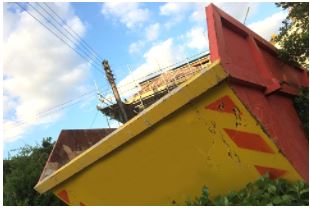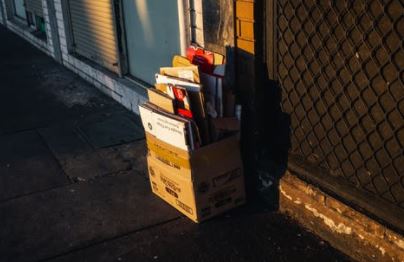Guaranteed Next Day Delivery!

How to Load Your Skip Bin Correctly No Matter the Waste Type
This guide will show you three handy tips to Load your skip bin correctly. Whether you are decluttering, renovating, or working on a construction project, following these steps helps you use your skip efficiently and safely. First, it’s important to plan before you start.
Filling a skip bin container can challenge anyone, especially when you have a lot of household waste. Depending on the size of the skip bin, bulky or heavy items can be tricky to fit. Nobody wants to toss items loosely! Therefore, learning how to Load your skip bin correctly ensures you maximise space, balance weight, and transport materials safely. In addition, it saves time and reduces unnecessary trips.
#1. Fill the Skip Bin Evenly Right-to-Left to Load Your Skip Bin Correctly
Uneven loading creates an imbalance that makes lifting and transporting the skip dangerous. For instance, placing a heavy item on one side without offsetting it can cause the bin to tip. To Load your skip bin correctly, place heavy items on opposite sides to distribute the weight evenly. By doing so, your delivery driver can lift and unload it safely and efficiently. Overall, this method ensures a smoother and safer process.

#2. Place Large Items First to Load Your Skip Bin Correctly
Always be strategic when deciding the order of loading. Start by placing larger items first so you can see how much space remains for smaller ones. This method prevents the skip from becoming top-heavy, reducing the risk of tipping during transport. Next, add smaller items as ‘fillers’ between the large items. In this way, you can Load your skip bin correctly and fit more in a single bin efficiently.
#3. Fill Small Gaps
While you load your skip, pay attention to empty spaces and fill them with smaller items. Randomly tossing rubbish wastes space and makes it difficult to reach gaps once the skip fills. By doing this, you ensure you Load your skip bin correctly and utilise every inch of your bin efficiently.
#4. Break Rubbish Down into Smaller Pieces
If some items are too large or awkwardly shaped, consider breaking them down into smaller pieces. Smaller pieces fit into gaps and maximise space, helping you Load your skip bin correctly. For example, break wooden furniture or cut large boards to fit them tightly into the bin. As a result, you can fit more and maintain balance.

#5. Flatten Cardboard Boxes
Flatten cardboard boxes before disposal to save space. Hollow boxes waste volume and limit what you can fit. By flattening boxes, you ensure you Load your skip bin correctly while maximising the skip’s capacity. Additionally, this makes it easier to place other items around them.
#6. Avoid Overfilling Your Skip Bin
Resist the urge to keep adding items to a full skip. Overfilling creates hazards: items may fall out during transport. Instead, choose a skip that matches your project’s capacity. Using Skip Bin Finder’s size chart helps you pick the right bin, saving time and money while avoiding the need for a second skip. Following this guideline ensures you Load your skip correctly every time.
In summary, learning how to correctly load your skip guarantees safety, efficiency, and maximum use of space. Fill evenly, place large items first, fill gaps, break down bulky items, flatten boxes, and avoid overfilling. Ultimately, following these steps allows you to complete your project confidently and safely.
Start today and make the most of your skip bin hire for any project!
